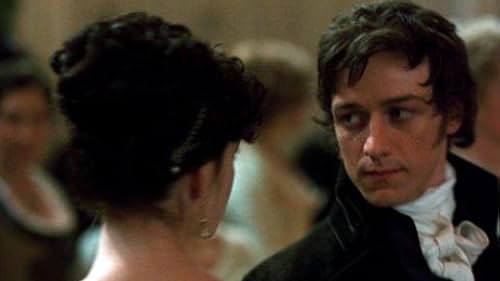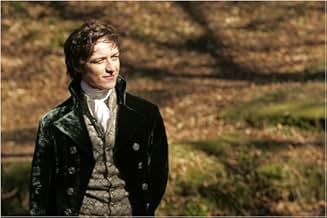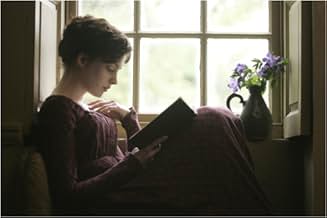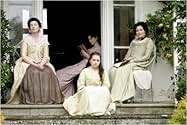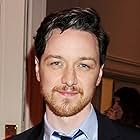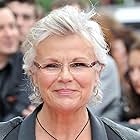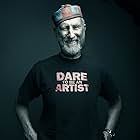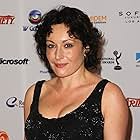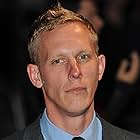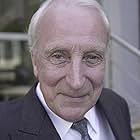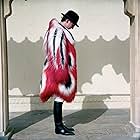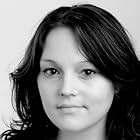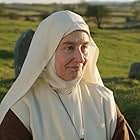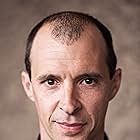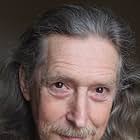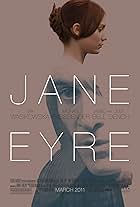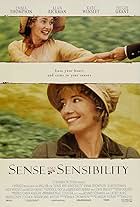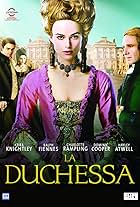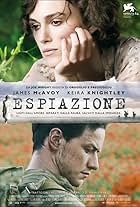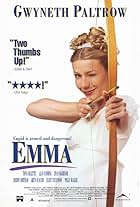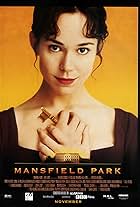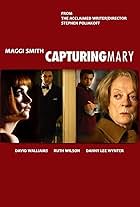VALUTAZIONE IMDb
7,0/10
66.048
LA TUA VALUTAZIONE
Un ritratto biografico prima della fama di Jane Austen e della sua storia d'amore con un giovane irlandese.Un ritratto biografico prima della fama di Jane Austen e della sua storia d'amore con un giovane irlandese.Un ritratto biografico prima della fama di Jane Austen e della sua storia d'amore con un giovane irlandese.
- Premi
- 3 vittorie e 6 candidature
Trama
Lo sapevi?
- QuizDame Maggie Smith is a patron of the Jane Austen Society.
- BlooperThroughout the film, Jane wears costumes almost 20 years ahead of the other characters. At the ball scene, she is the only one in short sleeves and an empire waist- all the others are dressed as fits the period, which is 1795. Presumably, this was to make Jane more recognizable to popular audiences more familiar with the empire style dresses her later characters wore.
- Citazioni
Tom Lefroy: What value will there ever be in life, if we are not together?
Recensione in evidenza
It is a truth universally acknowledged that reviews of Jane Austen movies must begin with the phrase 'It is a truth universally acknowledged...'.
I know very little about Jane Austen's life, although I spotted an error in this movie anyway: her deaf-mute older brother George was NOT raised at home with her (as seen here); he was institutionalised, and the hand-signing which Anne Hathaway briefly uses here is partly anachronistic. I confess that I've very little interest in Miss Austen, nor in her novels. But I'm hugely interested in the Regency period in which she lived. As I watched 'Becoming Jane', I was pleasantly astounded by the incredible period detail throughout the film: the houses (inside and out), the books, the churchyards, the carriages and coaches, the clothing. Even the musical instruments, the music and the dances are authentic! Well done! Of course, all these late 18th-century people have 20th-century orthodontia, and their hair is too clean. And the cricket bats don't look (or sound) as if they were made of willow, as they should have been.
I know that some people will be watching this movie for the costumes, so let me assure you that there are plenty of Empire waists, coal-scuttle bonnets, top boots and Kate Greenaway frocks. Several of the ladies wear delightful gloves.
This movie follows most of the rules for costume-drama chick-flicks. We get the de rigueur scene in which fully-clothed young women surreptitiously watch naked young men. (But not the reverse, of course.) We get the de rigueur scene in which a young woman performs a traditionally male activity and (of course) she beats the men at their own game. At a cricket match, Jane Austen steps into the crease. The bowler gives her an easy one, and (of course) she knocks it for six.
I suspect that most of this movie is fiction, and there is indeed one of those 'based on facts' disclaimers in the end credits. I was annoyed that various characters in this film constantly tell Jane Austen that, as a woman, she cannot hope to be the equal of a man, nor can she expect a happy life without a husband. These may indeed have been the accepted realities of Austen's time, but I had difficulty believing that so many people (especially young men who hope to win her) would make a point of making these comments so explicitly and so often.
Also, everyone in this movie keeps telling Jane that she cannot possibly write about anything which she hasn't experienced. (So she can't write about sexual passion unless ... nudge, nudge.) However, even in Austen's day, this premise was demonstrably untrue. If I want to write a murder mystery, do I need to commit a murder?
The performances in this film are universally excellent. Any movie with Dame Maggie Smith in it, I'm there. Ian Richardson (in his last role) is superb, wringing the full value from some succulent dialogue. James Cromwell has matured into one of the finest character actors I've ever seen, progressing light-years beyond the infantile Norman Lear sitcom roles of his early career.
As Jane Austen, Anne Hathaway has the sense to attempt only a very slight English accent, but she is far too pretty for this role. The real Jane Austen was apparently not pretty, and this was a major reason for why she never married. It beggars belief that the Jane Austen seen here -- the one who looks like Anne Hathaway -- would have so much difficulty attracting suitors. However, I'm a realist: there's simply no way that any production company would spend this much money on a costume romance and then cast an unattractive actress in the lead role.
Evidence indicates that Jane Austen's sister Cassandra was the prettier of the two, and that this discrepancy strongly shaped their relationship. But, again, there's no way that the makers of this film would upstage their own star actress by casting someone more beautiful as her sister. Anna Maxwell Martin, cast here as Cassandra, is a splendid actress and fairly attractive but certainly no beauty in Hathaway's league.
At the end of the film, a title card alludes to Jane Austen's 'short life'. She actually lived to age 41: a longer lifespan than any of the Brontë sisters', and fairly normal for Regency England. In the last scenes of this film, we see Hathaway in some dodgy 'age' make-up which makes her look rather more sixtyish than fortyish. Near the end of her life, the real Jane Austen had an unidentified illness which darkened her skin: again, I have no expectations of a big-budget film doing anything to compromise the beauty of its leading actress.
This film's title 'Becoming Jane' is a subtle pun, since Hathaway's embodiment of Jane Austen is so very 'becoming'. Geddit?
The makers of 'Becoming Jane' have gone to considerable trouble to give their target audience precisely what that audience want, which is only marginally related to the facts. On that score, they have succeeded. And the art direction in this movie is astonishingly thorough, and good. I'll rate 'Becoming Jane' 8 out of 10 as an excellent FICTION film.
I know very little about Jane Austen's life, although I spotted an error in this movie anyway: her deaf-mute older brother George was NOT raised at home with her (as seen here); he was institutionalised, and the hand-signing which Anne Hathaway briefly uses here is partly anachronistic. I confess that I've very little interest in Miss Austen, nor in her novels. But I'm hugely interested in the Regency period in which she lived. As I watched 'Becoming Jane', I was pleasantly astounded by the incredible period detail throughout the film: the houses (inside and out), the books, the churchyards, the carriages and coaches, the clothing. Even the musical instruments, the music and the dances are authentic! Well done! Of course, all these late 18th-century people have 20th-century orthodontia, and their hair is too clean. And the cricket bats don't look (or sound) as if they were made of willow, as they should have been.
I know that some people will be watching this movie for the costumes, so let me assure you that there are plenty of Empire waists, coal-scuttle bonnets, top boots and Kate Greenaway frocks. Several of the ladies wear delightful gloves.
This movie follows most of the rules for costume-drama chick-flicks. We get the de rigueur scene in which fully-clothed young women surreptitiously watch naked young men. (But not the reverse, of course.) We get the de rigueur scene in which a young woman performs a traditionally male activity and (of course) she beats the men at their own game. At a cricket match, Jane Austen steps into the crease. The bowler gives her an easy one, and (of course) she knocks it for six.
I suspect that most of this movie is fiction, and there is indeed one of those 'based on facts' disclaimers in the end credits. I was annoyed that various characters in this film constantly tell Jane Austen that, as a woman, she cannot hope to be the equal of a man, nor can she expect a happy life without a husband. These may indeed have been the accepted realities of Austen's time, but I had difficulty believing that so many people (especially young men who hope to win her) would make a point of making these comments so explicitly and so often.
Also, everyone in this movie keeps telling Jane that she cannot possibly write about anything which she hasn't experienced. (So she can't write about sexual passion unless ... nudge, nudge.) However, even in Austen's day, this premise was demonstrably untrue. If I want to write a murder mystery, do I need to commit a murder?
The performances in this film are universally excellent. Any movie with Dame Maggie Smith in it, I'm there. Ian Richardson (in his last role) is superb, wringing the full value from some succulent dialogue. James Cromwell has matured into one of the finest character actors I've ever seen, progressing light-years beyond the infantile Norman Lear sitcom roles of his early career.
As Jane Austen, Anne Hathaway has the sense to attempt only a very slight English accent, but she is far too pretty for this role. The real Jane Austen was apparently not pretty, and this was a major reason for why she never married. It beggars belief that the Jane Austen seen here -- the one who looks like Anne Hathaway -- would have so much difficulty attracting suitors. However, I'm a realist: there's simply no way that any production company would spend this much money on a costume romance and then cast an unattractive actress in the lead role.
Evidence indicates that Jane Austen's sister Cassandra was the prettier of the two, and that this discrepancy strongly shaped their relationship. But, again, there's no way that the makers of this film would upstage their own star actress by casting someone more beautiful as her sister. Anna Maxwell Martin, cast here as Cassandra, is a splendid actress and fairly attractive but certainly no beauty in Hathaway's league.
At the end of the film, a title card alludes to Jane Austen's 'short life'. She actually lived to age 41: a longer lifespan than any of the Brontë sisters', and fairly normal for Regency England. In the last scenes of this film, we see Hathaway in some dodgy 'age' make-up which makes her look rather more sixtyish than fortyish. Near the end of her life, the real Jane Austen had an unidentified illness which darkened her skin: again, I have no expectations of a big-budget film doing anything to compromise the beauty of its leading actress.
This film's title 'Becoming Jane' is a subtle pun, since Hathaway's embodiment of Jane Austen is so very 'becoming'. Geddit?
The makers of 'Becoming Jane' have gone to considerable trouble to give their target audience precisely what that audience want, which is only marginally related to the facts. On that score, they have succeeded. And the art direction in this movie is astonishingly thorough, and good. I'll rate 'Becoming Jane' 8 out of 10 as an excellent FICTION film.
- F Gwynplaine MacIntyre
- 18 ago 2007
- Permalink
I più visti
Accedi per valutare e creare un elenco di titoli salvati per ottenere consigli personalizzati
- How long is Becoming Jane?Powered by Alexa
Dettagli
- Data di uscita
- Paesi di origine
- Siti ufficiali
- Lingua
- Celebre anche come
- Becoming Jane
- Luoghi delle riprese
- Higginsbrook, Trim, County Meath, Irlanda(Steventon rectory)
- Aziende produttrici
- Vedi altri crediti dell’azienda su IMDbPro
Botteghino
- Budget
- 16.500.000 USD (previsto)
- Lordo Stati Uniti e Canada
- 18.670.946 USD
- Fine settimana di apertura Stati Uniti e Canada
- 972.066 USD
- 5 ago 2007
- Lordo in tutto il mondo
- 37.311.672 USD
- Tempo di esecuzione2 ore
- Colore
- Mix di suoni
- Proporzioni
- 2.35 : 1
Contribuisci a questa pagina
Suggerisci una modifica o aggiungi i contenuti mancanti

Divario superiore
By what name was Becoming Jane - Il ritratto di una donna contro (2007) officially released in India in English?
Rispondi
